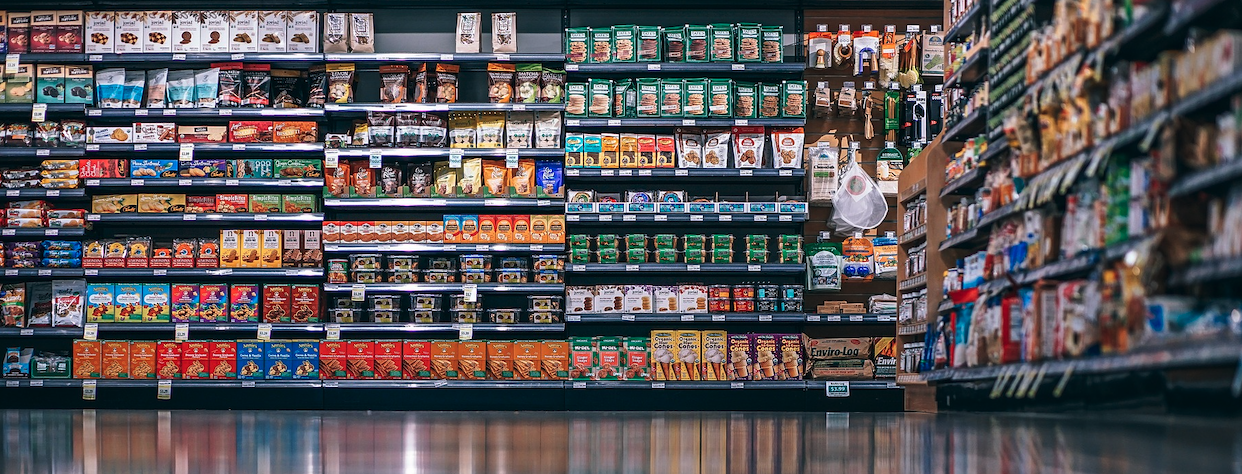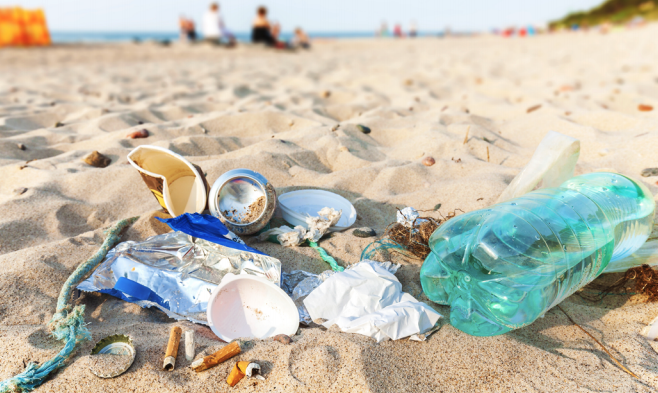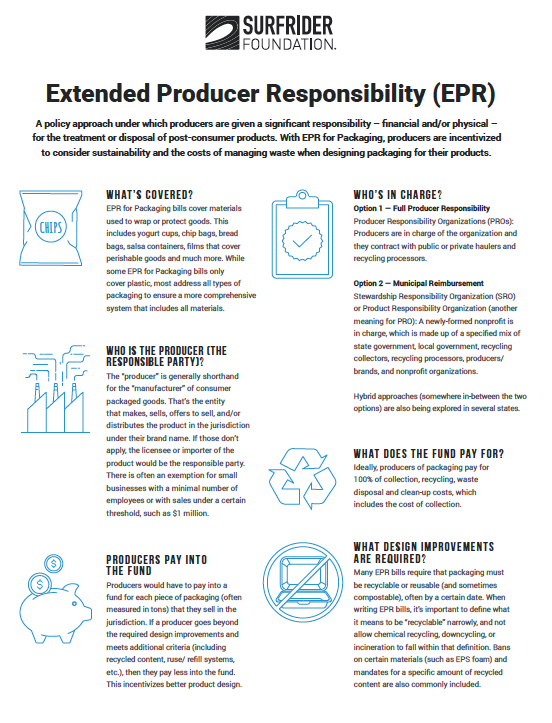
The Surfrider Foundation has successfully advocated for laws to ban or otherwise regulate single-use plastic at the local and state level for over a decade. At first, the focus was on single-use carryout bag laws, followed by foam foodware bans, and straws upon request policies. We’re still working on those policies, and we’re refining ordinance structures to address lessons learned. But we are also looking at broader policies, including those that ban a wider array of polystyrene foam items, and comprehensive foodware policies that require restaurants to provide reusable foodware for dine-in meals.
But, what about all that other plastic on store shelves?
After bags, foam, straws, and other foodware have been addressed there is still a lot of plastic packaging in circulation, including much of the packaging on store shelves. This includes yogurt cups, chip bags, bread bags, films that cover perishable goods, like hummus, and so much more. Much of that packaging is difficult for consumers to avoid and mostly not recyclable. In order to address and mitigate that packaging we need a comprehensive policy that goes beyond bans and fees on specific items, while still preserving space for source reduction laws for certain items.
One solution for addressing this packaging is Extended Producer Responsibility, also known as EPR or producer responsibility. EPR for packaging laws ensure that producers — meaning manufacturers and brands — bear the responsibility for the cost of recycling and waste disposal, as well as for cleanup, of their packaging. Right now that financial burden mostly falls on ratepayers and local governments, and sometimes volunteers doing clean-ups. That’s not only unfair, it leads to more waste. Hard or impossible-to-recycle packaging is what we get when manufacturers aren’t incentivized to consider sustainability or the costs of managing waste when designing packaging for their products.
The EPR concept isn’t wishful thinking, in the U.S. we have at least 118 EPR laws that have been adopted across 33 states. The laws cover 14 product areas, including electronics, needles (or “sharps”), pharmaceuticals, batteries, paint, mattresses and mercury-containing thermostats and lamps, among others. EPR for packaging is already happening and working well in Europe and parts of Canada, and in some instances, has been for more than 30 years!

How EPR Works
Under an EPR system for packaging, producers must pay into a fund for the recycling, disposal and cleanup of the producer’s packaging. The more wasteful their packaging, the more the producer must pay. As a simplified example, an EPR system might require a producer to pay 2¢ into a fund for each piece of packaging (or by weight), and they would also have to meet the minimum requirements for packaging design. However, the producer would have the option to pay less (maybe 1¢) if they improved their product design by specific actions that result in less trash and fewer non-recyclable materials, like by reducing the amount of packaging they use per product, or by using recycled content. The result is that less waste is produced, the packaging put on our shelves is more sustainable, and local governments no longer bear the financial burden of dealing with low-value plastics.
Maine and Washington State were early movers with EPR, and now EPR bills are being seriously considered at the state level in at least ten states. The Federal Break Free From Plastic Pollution Act, which Surfrider worked closely on, includes EPR as one of the main policy goals. California’s state bills that didn’t quite make it through last session (SB 54 / AB 1080), as well as a California Voter Initiative set for the 2022 ballot, don’t identify as EPR, but share some similar concepts.

[Click here for a PDF of the EPR for Packaging fact sheet.]
Our main focus at Surfrider is still on source reduction: Surfrider advocates first for the reduction of single-use plastics and second for the reuse, composting, or recycling of all plastics. However, EPR is a growing focus — and we are also working to incorporate source reduction and refill/reuse incentives in EPR policies, in part to ensure EPR laws are effective at achieving source reduction and in part to ensure we’re communicating consistently that recycling is not a standalone solution. EPR is something that we will hear a lot more about in this legislative session and beyond — and Surfrider will plan to be part of those conversations.
